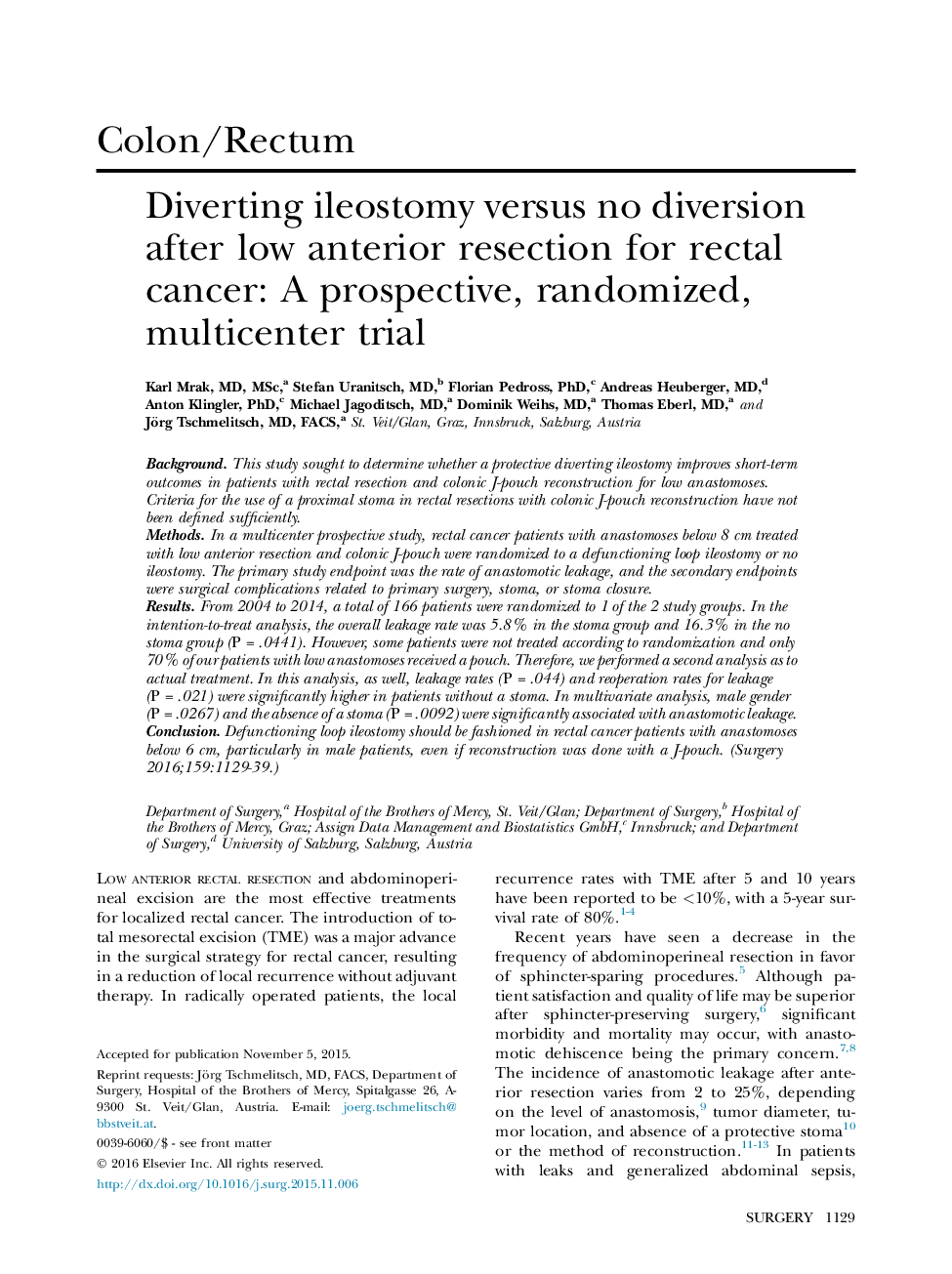| Article ID | Journal | Published Year | Pages | File Type |
|---|---|---|---|---|
| 4306503 | Surgery | 2016 | 11 Pages |
BackgroundThis study sought to determine whether a protective diverting ileostomy improves short-term outcomes in patients with rectal resection and colonic J-pouch reconstruction for low anastomoses. Criteria for the use of a proximal stoma in rectal resections with colonic J-pouch reconstruction have not been defined sufficiently.MethodsIn a multicenter prospective study, rectal cancer patients with anastomoses below 8 cm treated with low anterior resection and colonic J-pouch were randomized to a defunctioning loop ileostomy or no ileostomy. The primary study endpoint was the rate of anastomotic leakage, and the secondary endpoints were surgical complications related to primary surgery, stoma, or stoma closure.ResultsFrom 2004 to 2014, a total of 166 patients were randomized to 1 of the 2 study groups. In the intention-to-treat analysis, the overall leakage rate was 5.8% in the stoma group and 16.3% in the no stoma group (P = .0441). However, some patients were not treated according to randomization and only 70% of our patients with low anastomoses received a pouch. Therefore, we performed a second analysis as to actual treatment. In this analysis, as well, leakage rates (P = .044) and reoperation rates for leakage (P = .021) were significantly higher in patients without a stoma. In multivariate analysis, male gender (P = .0267) and the absence of a stoma (P = .0092) were significantly associated with anastomotic leakage.ConclusionDefunctioning loop ileostomy should be fashioned in rectal cancer patients with anastomoses below 6 cm, particularly in male patients, even if reconstruction was done with a J-pouch.
